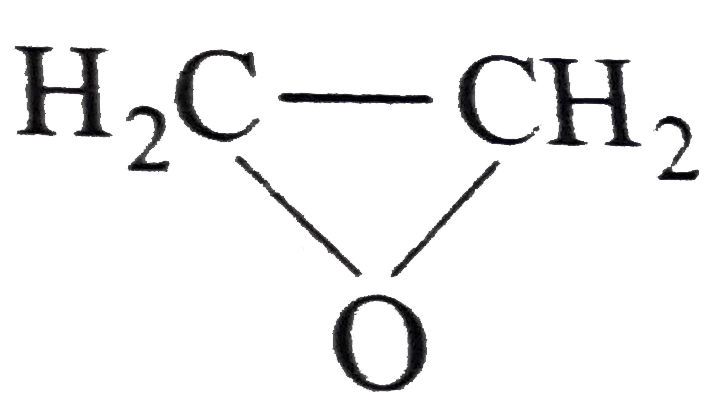Treatment of glucose with nitric acid leads to the formation of a
monocarboxylic acid
dicarboxylic acid
tricarboxylic acid
tetracarboxylic acid
The correct Answer is:B
HNO3 is the more vigorous oxidizing agent. It brings about oxidation not only of the −CHO group but also of the −CH2OH group.
HOCH2(CHOH)4CHOHNO3−−−→HOO(CHOH)4COOHsaccharic acid
Topper's Solved these Questions
- BIOMOLECULESBOOK - R SHARMACHAPTER - BIOMOLECULESEXERCISE - Follow-up Test 4
7 Videos
- BIOMOLECULESBOOK - R SHARMACHAPTER - BIOMOLECULESEXERCISE - Follow_up_ Test 5
6 Videos
- BIOMOLECULESBOOK - R SHARMACHAPTER - BIOMOLECULESEXERCISE - Follow-up Test 2
12 Videos
- AMINESBOOK - R SHARMACHAPTER - AMINESEXERCISE - Archives
36 Videos
- CHEMICAL KINETICSBOOK - R SHARMACHAPTER - CHEMICAL KINETICSEXERCISE - Archives
39 Videos
Similar Questions
The treatment of alkyl chloride with aqueous KOH leads to formation of alcohols but in the presence of alcoholic KOH, alkenes are major products. Explain.
View SolutionThe treatment of alkyl chlorides with aqueous KOH leads to the formation of alcohols but in the presence of alcoholic KOH, alkenes are major products. Explain.
View Solution
Knowledge Check
The reaction between an alcohol and carboxylic acid leads to the formation of
AAldehydeBEsterCKetoneDParaffinsThe reaction of
 with RMgX, leads to the formation of :ARCHOHRBRCHOHCH3CR2CHCH2OHDRCH2CH2OH
with RMgX, leads to the formation of :ARCHOHRBRCHOHCH3CR2CHCH2OHDRCH2CH2OH
The treatment of alkyl chlorides with aqueous KOH leads to the formation of alcohols but in the presence of alcoholic KOH, alkenes are major products. Explain.
View SolutionThe treatment of alkyl chlorides with aqueous KOH leads to the formation of alcohols but in the presence of alcoholic KOH, alkenes are major products. Explain.
View SolutionThe treatment of alkyl chlorides with aqueous KOH leads to the formation of alcohols but in the presence of alcoholic KOH, alkenes are major products. Explain.
View SolutionMetals like Cr and Al do not dissolve in concentrated nitric acid because of the formation of a__________ film of oxide on the surface.
View SolutionGive an example to show the effect of concentration of nitric acid on the formation of oxidation product.
View SolutionGiven an example to show the effect of concentration of nitric acid on the formation of oxidation product.
View Solution
